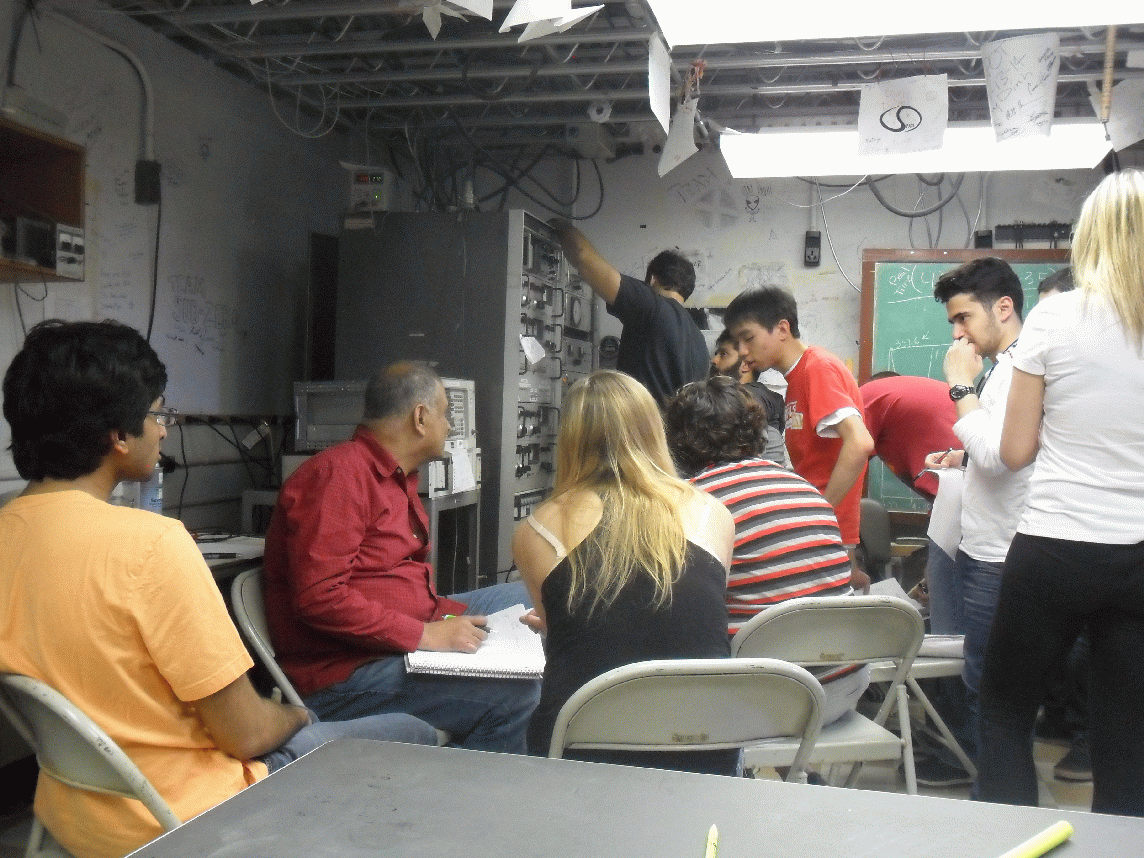
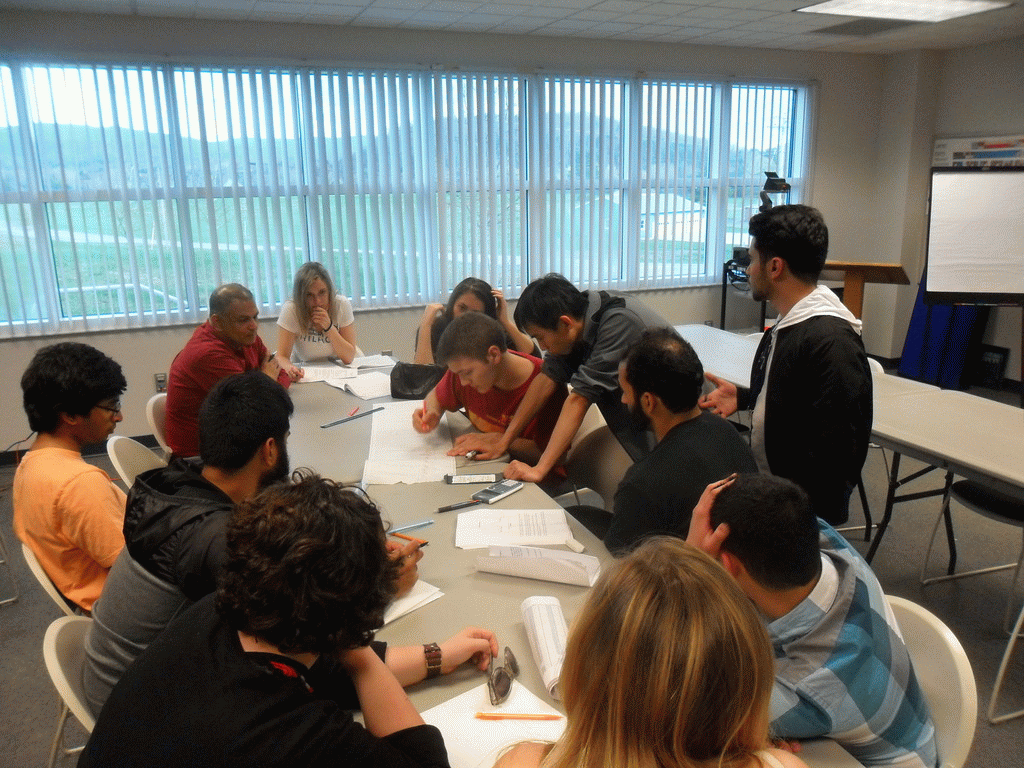
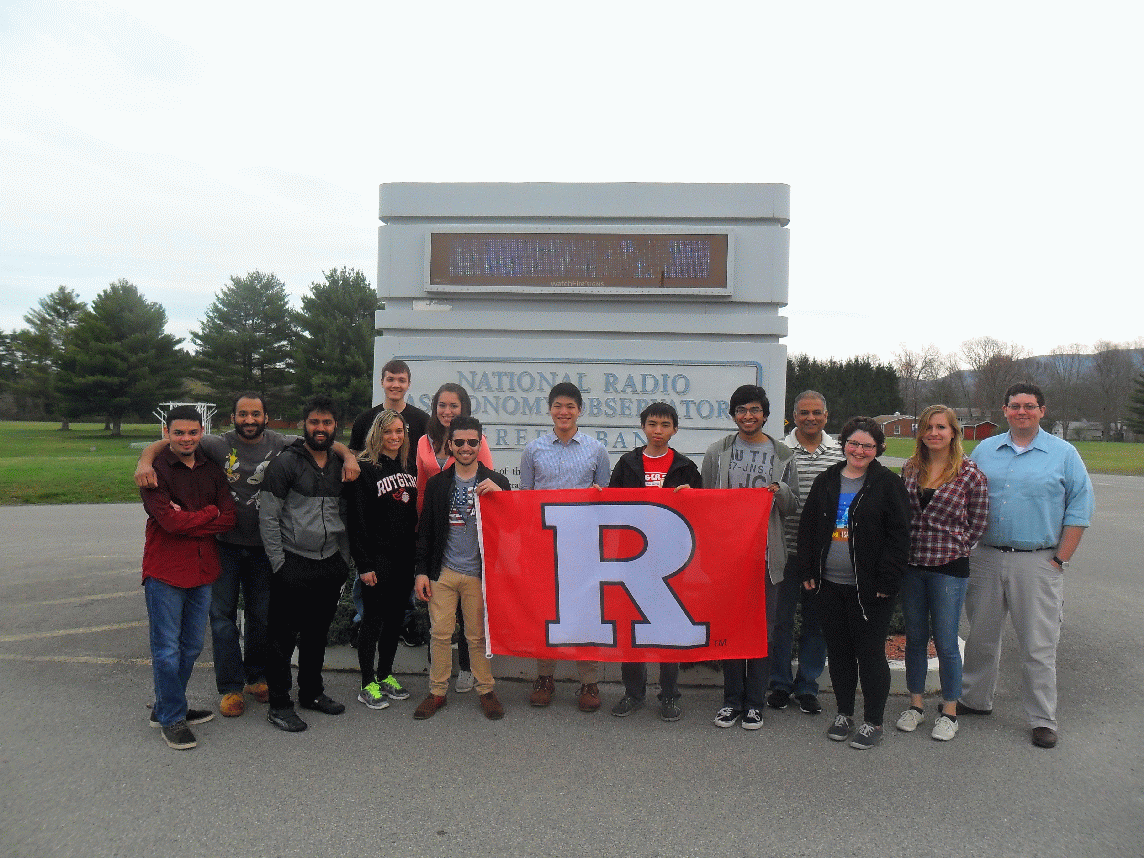
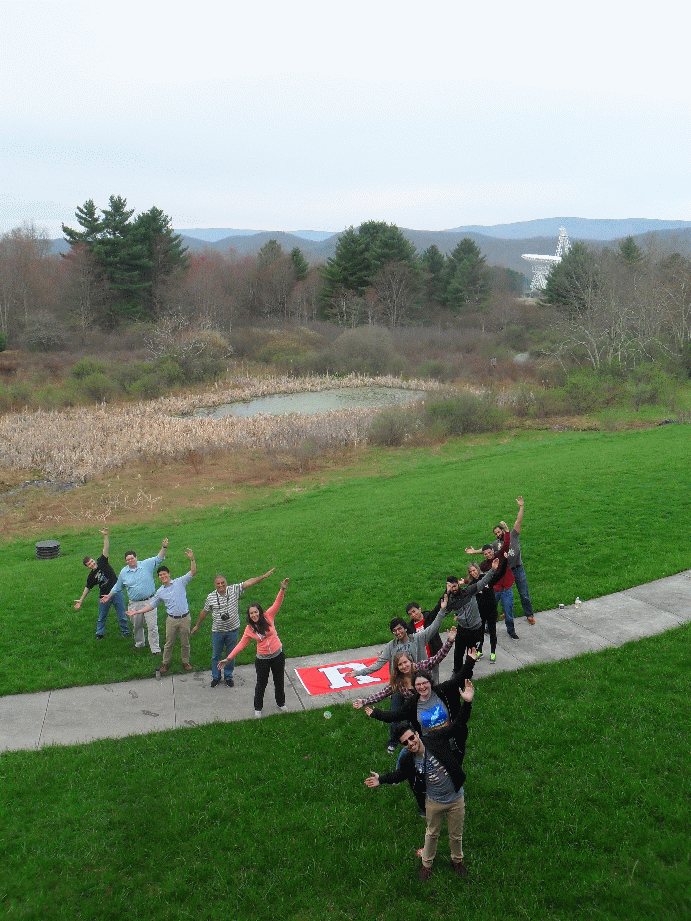
Pictures from class trip to the National Radio Astronomy Observatory in Green Bank, West Virginia (April 17-19, 2015):
 |
 |
 |
 |
|
Professor Andrew Baker Serin W309 Phone: 848-445-8887 Email: ajbaker[at]physics.rutgers.edu
Instructor |
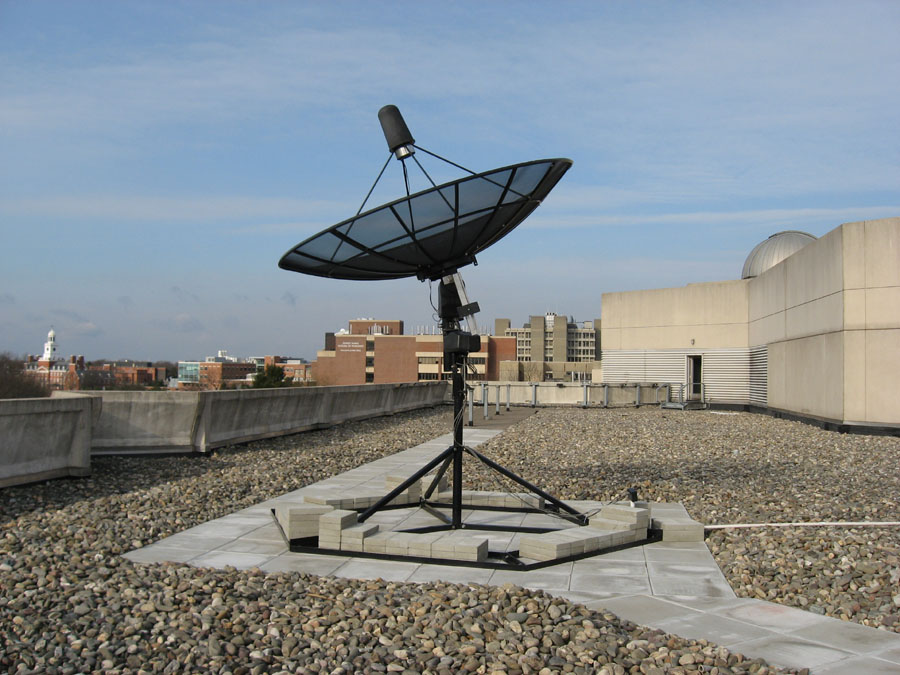
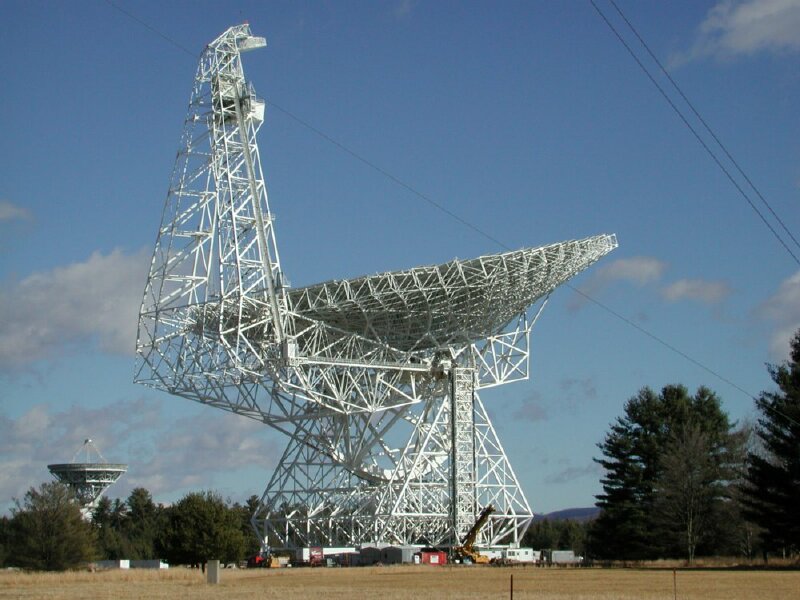
|
Course meetings
Lectures: Serin 401, Monday 10:20-11:40am
Labs: Meet at Serin 403b (or as instructed), according to your assigned weekly time slots:
| SECTION | TIME | STUDENTS |
| A | Mon 1:40-3:00pm | Corinne Deegan, Ivana Krstevska, Jeremy McKeegan |
| B | Mon 5:00-6:20pm | Virginia Agostinelli, Peter Chi, Atul Divakarla |
| C | Mon 6:40-8:00pm | Sarah Ogg, Waleed Qawasmi, Milind Ramekar |
| D | Tue 3:20-4:40pm | Jay Deshpande, Ani Thuppul, Liana Valentin |
| E | Wed 12:00-1:20pm | Sourabh Cheedella, Sejad Pathan, Christine Ray |
| F | Wed 3:20-4:40pm | Jackie Bradli, Tina Emami, Alex Ioakimidis |
| G | Thu 12:00-1:20pm | Yotam Cohen, Ryan Galinkin, Robert Gruytch |
Office hours
Every week: Monday 3:30-4:30pm (Baker); Thursday 5:00-6:00pm (Wu); or by appointment
Analysis weeks: One of us will be "on call" during each of the
regular lab section times.
Textbooks
This course does not have an official textbook. However, you may find it
useful (or just interesting!) to dip into Bracewell, The Fourier Transform
and its Applications, Rohlfs & Wilson, Tools of Radio Astronomy,
and Wall & Jenkins, Practical Statistics for Astronomers, all of which
will be on reserve in SERC. The online Essential
Radio Astronomy course developed by
Jim Condon and
Scott Ransom at
the
National Radio Astronomy
Observatory is also an excellent reference.
Overview
Here's the official course catalog listing:
"Observational study of the solar system, stars, and galaxies, using the Serin
3 meter radio telescope. Emphasizes computer techniques for data reduction and
analysis. Topics may include calibrating system properties, the variability of
the Sun, Jupiter, or quasars, and mapping the distribution of hydrogen in our
Milky Way galaxy and measuring its rotation."
I plan to teach this course so that by the end of it you will not only have experience acquiring and analyzing data from the (ahem) 2.3 meter telescope on the roof, but also an understanding of how astronomers use much larger (e.g., 100 meter) radio telescopes in their research, and what kinds of astronomical targets they observe.
Schedule
Lectures: The sequence of lecture topics may be updated during the
course of the semester. The last lecture is tentatively reserved for a topic
related to radio astronomy to be chosen shortly after spring break by the
students enrolled in the course. This will give you an opportunity to
make me sweat, thus exacting revenge for a semester's worth of quizzes and lab
reports.
Labs: There will be a total of six labs in this course. Each of the
first four labs will involve one week of observations and one week of analysis,
with lab reports due the following Monday in lecture. The fifth lab will
involve analysis of an existing dataset taken with an array of radio
telescopes. The sixth lab will involve either a final set of observations with
the 2.3
meter telescope on the roof, or an observing trip to West Virginia.
NRAO trip: A class trip to the National Radio Astronomy Observatory's
site in Green
Bank, West Virginia has been arranged for the weekend of April 17-19.
This will be a time-consuming trip (the drive alone takes 7-8 hours each
way); however, it will give you a unique opportunity to see a research-grade
observatory located in the center of the National Radio Quiet Zone, a variety of radio telescopes,
and hands-on observing experience with a more powerful instrument than what
we have available in New Jersey. Students who participate will be excused
from the sixth lab.
| WEEK | LECTURE | LECTURE TOPIC | LAB | DUE |
|---|---|---|---|---|
| 1 | Jan 26 | course organization; radiative processes; specific intensity | ||
| 2 | Feb 2 | lab # 1; the 21cm line of HI | Hands-on week # 1 | |
| 3 | Feb 9 | statistics and radio astronomy | Analysis week # 1 | |
| 4 | Feb 16 | lab # 2; gas dynamics | Hands-on week # 2 | Report # 1 |
| 5 | Feb 23 | the interstellar medium; active galactic nuclei | Analysis week # 2 | |
| 6 | Mar 2 | lab # 3; Fourier transforms; radio antennas | Hands-on week # 3 | Report # 2 |
| 7 | Mar 9 | radio telescopes; interferometry | Analysis week # 3 | |
| 8 | Mar 23 | lab # 4; Green Bank trip; deconvolution | Hands-on week # 4 | Report # 3 |
| 9 | Mar 30 | final thoughts on telescopes, interferometry, and deconvolution | Analysis week # 4 | |
| 10 | Apr 6 | lab # 5; stars and planets | Hands-on week # 5 | Report # 4 |
| 11 | Apr 13 | distant, dusty galaxies | Analysis week # 5 | |
| Apr 17-19 | visit to Green Bank, West Virginia | |||
| 12 | Apr 20 | galaxy clusters | Hands-on week # 6 (for students not visiting NRAO) |
|
| 13 | Apr 27 | cosmic microwave background and reionization | Analysis week # 6 (for students not visiting NRAO) |
Report # 5 |
| 14 | May 4 | student choice | Report # 6 (for students not visiting NRAO) |
Grading Your course grade will be based on a combination of four elements:
Other items